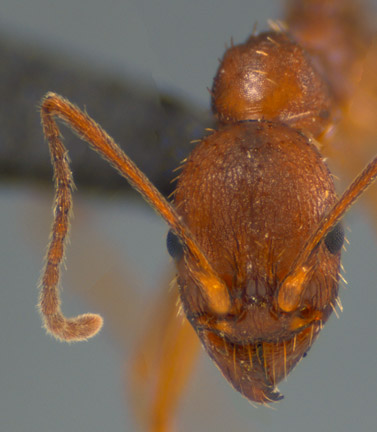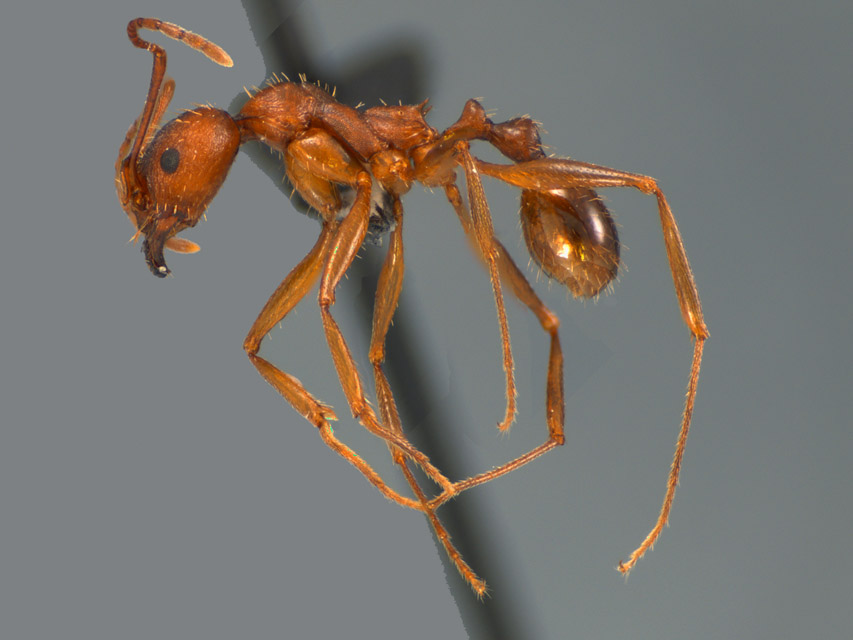Introduction
Ants in the genus Aphaenogaster are medium sized to large, slender with long legs and antennae, usually have propodeal spines (a few species lack spines), have 12 segmented antennae with the last 4 segments forming a weak club. The genus is widespread in North America and species nest in rotting wood, under bark, and in soil.
Identification
Aphaenogaster treatae is a large dark reddish-brown species. Workers and queens have a distinctive lobe at the base of the scape usually extending at least one-fourth the length of the scape. The lobe is thick, with its upper face forming an obtusely projecting angle in the middle (as seen from the side). Aphaenogaster ashmeadi, a rarely collected species in AL and MS, also has a lobe at the base of the scape, but the lobe usually only extends rearward along the basal fifth (or less) of the scape and is flat and thin (as seen from the side).
Biology and Economic Importance
Aphaenogaster treatae is a common species in this region in prairies and open woodland habitats where it nests in the soil. In AL and MS, this species can usually be identified in the field by its size.
Distribution
Literature Cited
Links
AntWeb Images
Discover Life Images
|





